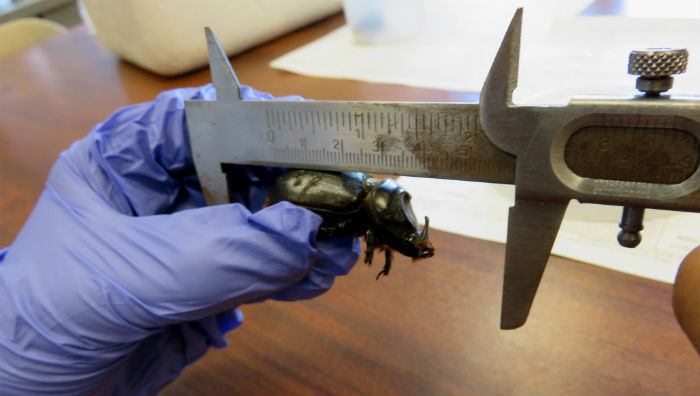Podcast: Play in new window

BOB HIRSHON (host):
Outsmarting invasive beetles. I’m Bob Hirshon and this is Science Update.
Ah, Hawaii: sandy beaches, warm surf, and palm trees. But invasive coconut rhinoceros beetles that have already decimated the island of Guam’s trees now threaten Hawaii’s iconic palms as well. To stop them, University of Hawaii researchers hope to use the insect’s own sounds to track them down. At a meeting of the Acoustical Society of America, acoustician John Allen said the beetle’s large size makes its mouse-like chirp unique:
(rhino beetle chirp)
…and its wingbeats resemble an outboard motor:
(wingbeats like an outboard motor on a small boat)
JOHN ALLEN (University of Hawii, Manoa):
They’re nocturnal, but no one knows where they come from, where the populations are moving, so one goal would be to see if you could detect them, and then can you track them and see where they’re going?
HIRSHON:
The researchers aim to prevent the uninvited pests from spreading before they can wreak havoc in Hawaii. I’m Bob Hirshon, for AAAS, the science society.
Story by Susanne Bard
